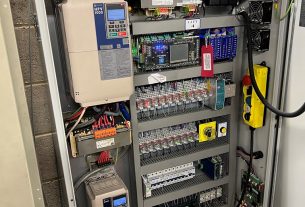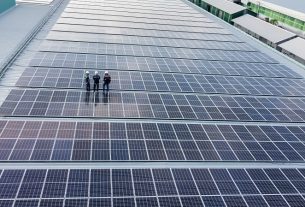The massive scale-up of work across the UK’s water and wastewater companies in AMP8 is no secret, but the way projects are delivered will have to change, says Dominic Hurd, managing director, ACWA Services.
A little celebrated fact about the UK is that it sits among the ten countries achieving the maximum score for drinking water quality, according to Yale University’s Environmental Performance Index. However, according to the chief inspector of the Drinking Water Inspectorate, the water industry needs to ensure strategic investment to maintain the quality and sufficiency of supplies.
Regulators are expecting water company investment plans in AMP8 – the asset management plan period 2025-30 – to prioritise drinking water quality and sufficiency, and build resilience to mitigate against scarcity and drought. The volumes required, in the face of population growth and climate change, mean that new groundwater sources are being brought into use – and must meet ever-tightening quality standards.
Many of these sources are in rural areas where nitrate contamination from fertilisers requires removal. The Drinking Water Directive prescribes a maximum concentration of 50mg/l NO3 to ensure safe supplies, and the technologies capable of achieving the required parameters, in a tight footprint, are well proven.
ACWA’s own Nitreat process technology has been successfully installed at some 35 sites over 20 years. This shows that the AMP8 challenge will not only be around delivering successful outcomes, it will also be about the planning and execution due to the sheer number of sites requiring upgrades.
As the main water company operating in the UK’s agricultural powerhouse of eastern England, Anglian Water is ahead of the curve in nitrate removal. The company has been working closely with ACWA for over two decades, and all the lessons learned have paved the way for the upscaling necessary to deliver the increased number of sites needed in AMP8.
Water companies already making decisions around their preferred approaches to nitrate removal, as they increase installations across multiple sites. The conversations they are having with their suppliers should include factors like repeatability, supply chain resilience and procurement.
Pre-engineered package plants, like ACWA’s Nitreat fixed media bed, counter-current ion exchange technology, allow for repeatable processes across multiple sites, with tailoring to different flow requirements. Reducing technical customisation in this way leads to faster, more efficient project delivery.
The same efficiency mindset can be applied to the delivery of whole programmes of works. By adopting a batch delivery approach, and grouping sites for simultaneous or sequential handover, all the advantages of the repeatable package plant design can be leveraged – optimising resource allocation and reducing delays.
With the continued development 20 years of knowledge and expertise brings, ACWA’s Nitreat technology can now be procured and installed as a packaged plant – and that is how it should be thought of. The resources required to deliver bespoke equipment to each site, using detailed designs, over 18-month planning periods, are no longer practical or necessary.
The earlier the engagement between client, stakeholders and suppliers begins, the more robust the whole scheme – and each individual project – will be. This includes fully fleshed designs, which will give enhanced outcomes across the piece for many years to come.
Procurement can also begin at the earliest juncture, with equipment, parts and materials ordered in bulk. This improves terms with suppliers, reducing overall costs, mitigating supply chain delays, minimising onsite lead times and ensuring smoother, faster delivery.
Some of the equipment and parts used in ACWA’s treatment technologies, for example, are from single-source suppliers, and our team is already preparing the ground to ensure availability. Even the supply chain challenges on control panel components that emerged during the pandemic are still working their way through.
With project delivery anticipated at twice the usual scale, our advice to water companies is procure now to secure – even for projects planned out to 2028 and beyond. Not only will forward planning ensure availability at the right time, it will secure the best price.
With strong communication and regular check-ins, alignment of all stakeholders is enhanced, further reducing delays. For the water company, benefits pileup – from ease of implementation, to efficiency gains, and the standardisation of operation and maintenance across all sites.
Given that investment in AMP9 – 2030-35 – is likely to be at least as big as AMP8, the efficiencies will not only reap rewards now, but well into the future.





